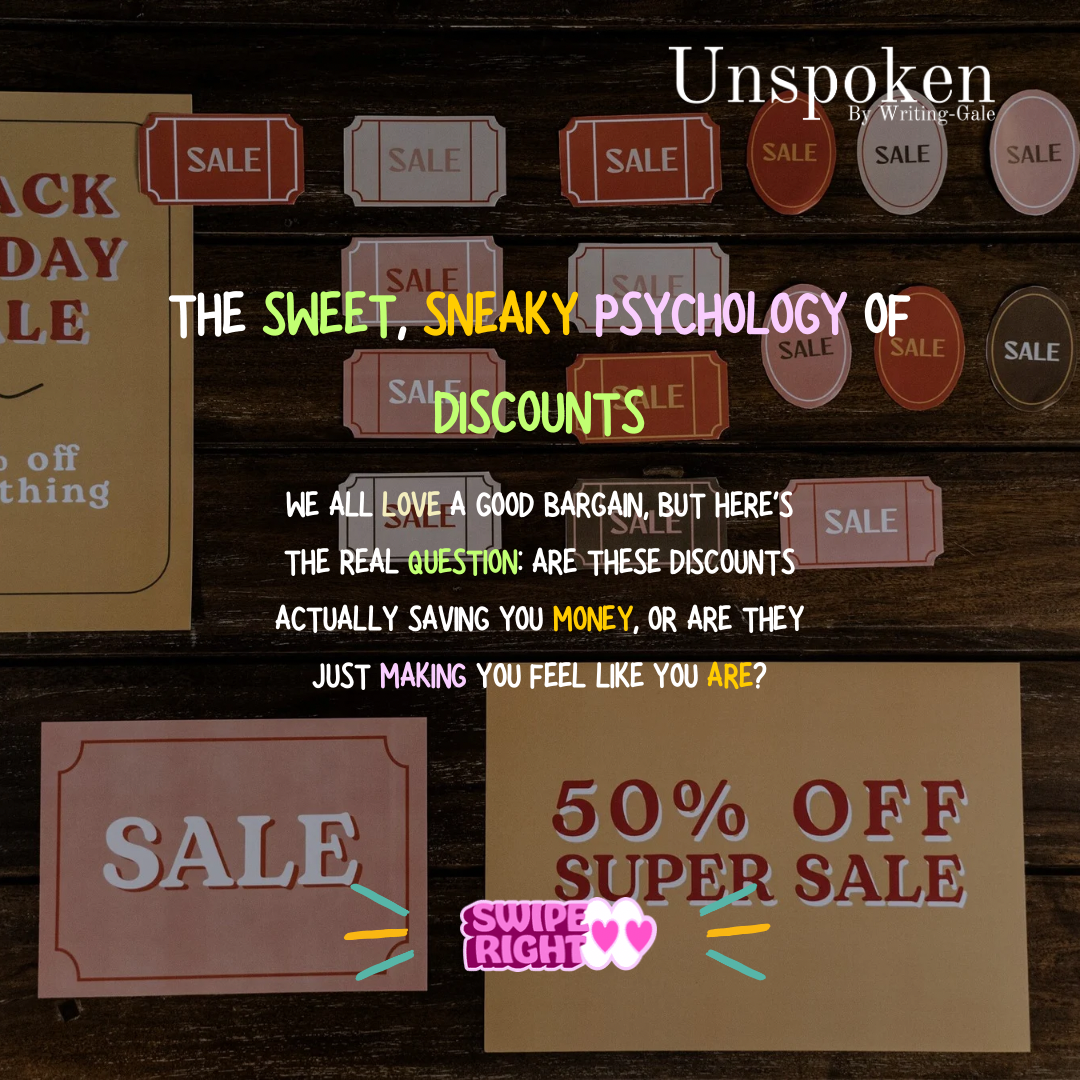By Kimani Alhassan
Nothing gets a shopper’s heart racing like the sight of a big, bold SALE sign. Black Friday Mega Deals. Buy One, Get One Free. Flash Sale – 50% Off! It’s like a siren call—exciting, tempting, and sometimes, a little tricky.
We all love a great bargain, but here’s the real question: Are these discounts actually saving you money, or just making you feel like you are?
The Psychology of Discounts: Why They Work
People love the thrill of a great deal. Seeing a price drop triggers a sense of urgency and satisfaction, making us feel like we’re outsmarting the system.
Imagine you’ve been eyeing a gadget priced at ₦50,000, and suddenly, it’s slashed to ₦35,000. Feels like a steal, right? But what if the initial price was always meant to be around ₦35,000? Some pricing strategies include setting a higher “original” price to make discounts seem more impressive than they actually are.
This isn’t necessarily deceptive—it’s a time-tested marketing strategy that enhances the perceived value of a deal. And let’s be honest, who doesn’t love feeling like they got the best price possible?
The Urgency Factor: Act Now or Regret Later!
Ever seen a countdown timer on an online store? “Only 3 items left at this price!” or “Sale ends in 24 hours!” This is urgency marketing, designed to encourage quicker decision-making.
While this can be beneficial for consumers who genuinely need an item, it’s also a nudge to make impulse purchases. If used wisely, urgency can help shoppers take advantage of real savings. The key is to pause and ask yourself: Would I buy this at full price? If the answer is no, you might not need it as much as you think.
Do Discounts Actually Make Us Spend More?
The short answer? It depends.
For essentials like groceries, toiletries, and household items, discounts are a win. Bulk-buying at lower prices means real savings in the long run.
For luxury or non-essential items, the effect is different. A ₦500,000 designer bag discounted to ₦400,000 might still be out of reach for many. The discount makes it feel more attainable, but it doesn’t suddenly make it affordable for everyone.
Discounts influence our spending habits more than they increase them. You may not have planned to buy that new perfume or pair of sneakers, but seeing that 50% off label makes it all the more tempting.
The Joy of the Deal: Why We Love Sharing Our Savings
Let’s be honest—half the fun of snagging a great deal is telling people about it.
“Guess how much I got this dress for? HALF THE PRICE!”
“This phone? Snagged it during the flash sale!”
Even if the item wasn’t a necessity, the feeling of getting a bargain makes it feel like a win. It’s less about the product itself and more about the pride of securing a great deal.
Smart Shopping: Making Discounts Work for You
Not all sales are created equal, but that doesn’t mean they’re not worth it. Many brands use discounts to drive engagement, reward loyal customers, and clear out old stock to make room for new inventory. These sales present real opportunities for consumers to save.
So, how do you make discounts work for you? Here are some tips:
- Buy only what you need – If you weren’t considering the purchase before the discount, pause and rethink it.
- Compare prices – A deal is only great if the discount is real. Cross-check prices on multiple platforms.
- Take advantage of loyalty programs – Many brands offer members-only discounts that provide extra value.
- Beware of impulse buys – If you’re feeling rushed to buy, take a step back. Most sales come around again.
Are You Really Saving?
At the end of the day, discounts are a valuable tool—for both brands and consumers. They help businesses move products while giving shoppers opportunities to save. The key is making sure you’re actually getting value, not just the illusion of it.
So next time you see a tempting price drop, ask yourself: Is this something I need, or just something I want because it’s on sale?
Because true savings don’t come from spending less on something unnecessary—they come from making intentional, value-driven purchases.

